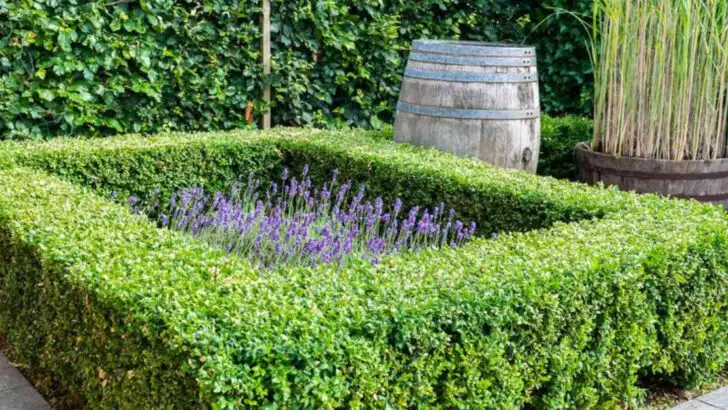When it comes to defining your garden or backyard, living fences offer so much more than traditional walls or fences. They bring life, texture, and color while providing privacy, shelter, and even food for pollinators. Unlike ordinary fences, these natural barriers change and grow with the seasons, creating an ever-evolving backdrop for your outdoor space.
Whether you have a sprawling garden or a compact urban yard, a living fence can be customized to fit your style and needs. From fast-growing shrubs and climbing vines to flowering hedges and evergreen barriers, there are countless options that not only look stunning but also support local wildlife. Plus, many living fences require less maintenance than their hardscape counterparts once established.
In this article, we’ll explore 18 creative and practical ideas for building living fences that transform your property. These ideas blend function and beauty, proving that sometimes the best walls aren’t built — they’re grown.
Bamboo Barrier
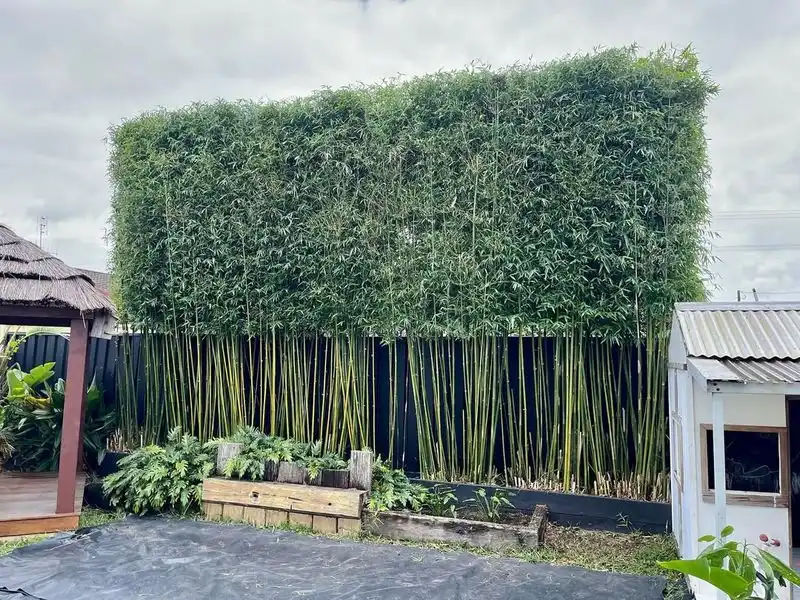
Bamboo, with its rapid growth and dense foliage, offers an excellent natural fence option. Its varying greens and towering stalks create a visually interesting barrier. Ideal for those seeking privacy, bamboo fences also provide a serene backdrop. Though they require maintenance to prevent overgrowth, their unique aesthetic is worth the effort. Planting bamboo in large pots can control spread, making it manageable in smaller spaces. A bamboo fence can transform an ordinary backyard into an exotic retreat, offering both functionality and flair.
Hedge Haven
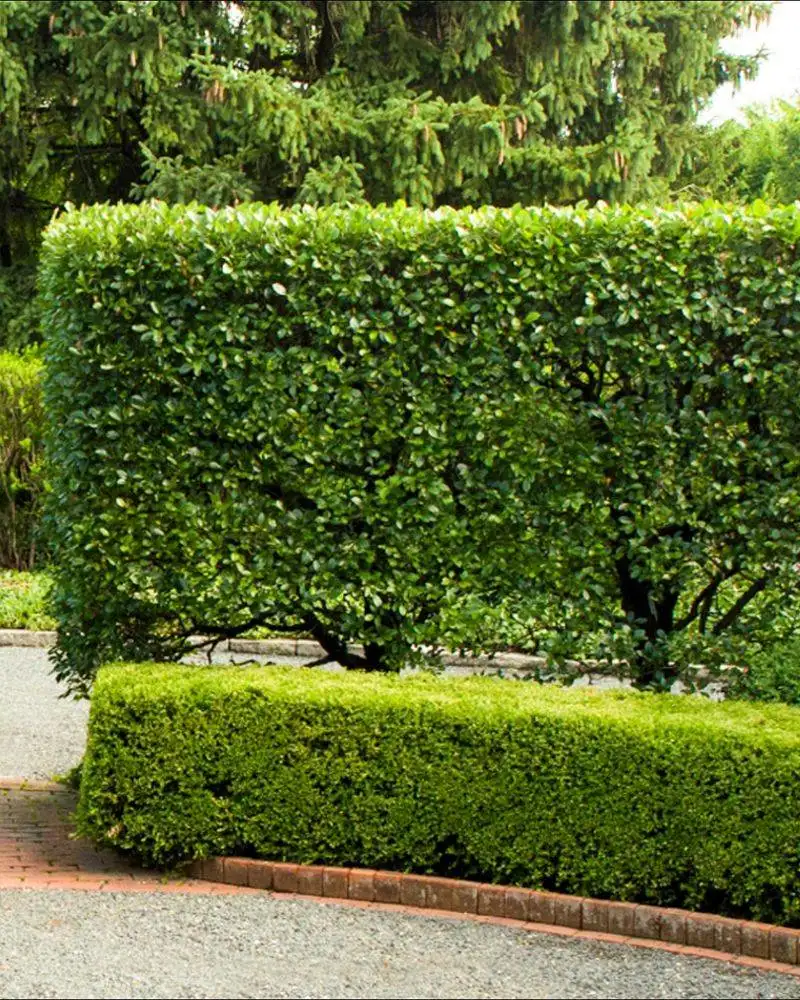
Hedges have long been a classic choice for garden boundaries. Offering both privacy and beauty, they can be shaped to suit any landscape style. From tight boxwoods to flowering privets, the options are endless. Trimming them regularly ensures they remain tidy, while different species allow for seasonal interest. Whether formal or informal, hedges add a touch of elegance to outdoor spaces. Choosing native species can also support local wildlife, making your hedge not just a boundary, but a vibrant part of the ecosystem.
Wisteria Wonder
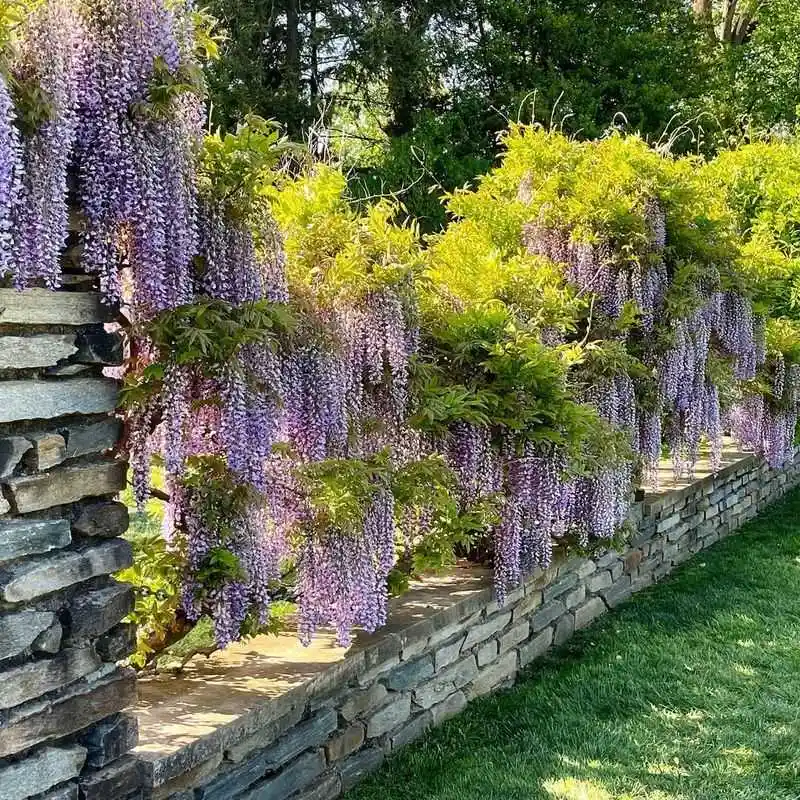
With its cascading blooms, wisteria transforms simple structures into breathtaking features. This vine’s vibrant purple and white flowers evoke a sense of romance and nostalgia. Draped over arches or trellises, wisteria creates shade and privacy. Fast-growing and robust, it requires sturdy support and routine pruning. Its beauty, however, makes the effort worthwhile. Incorporating wisteria into a fence or arbor invites whimsical charm into your garden, offering visitors a delightful visual treat and fragrant experience.
Espalier Elegance
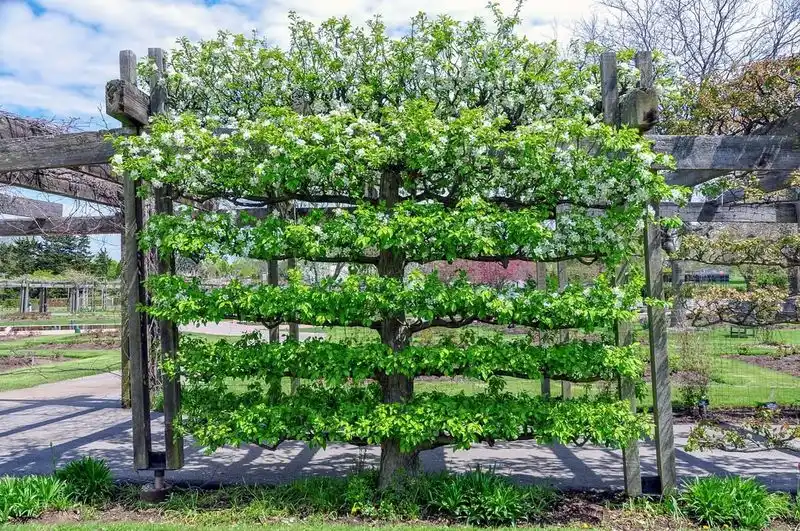
Espalier is an ancient technique that turns fruit trees into living art. By training branches to grow flat against a wall or fence, trees become both decorative and productive. Apples, pears, and other fruit-bearing trees are popular choices. This method saves space and can enhance the appearance of plain walls. Regular pruning and guidance are essential for maintaining structure. Beyond aesthetics, espaliers offer the added benefit of fruit harvests, merging beauty with utility in a truly unique manner.
Climbing Roses
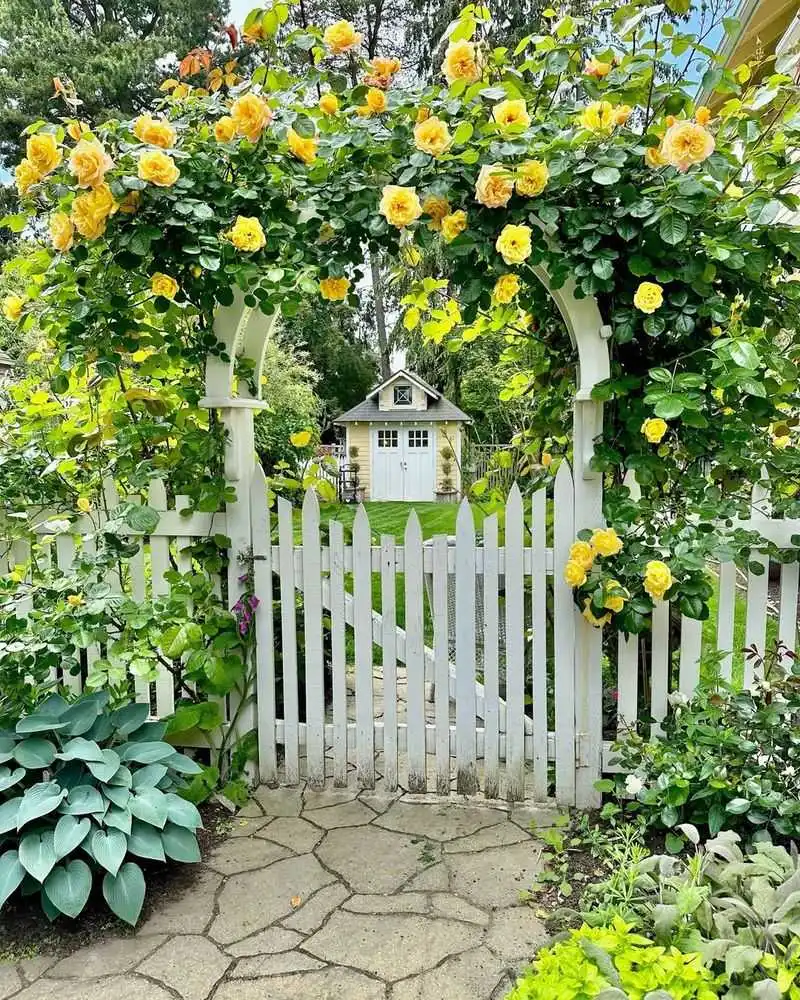
The allure of climbing roses lies in their ability to turn any fence into a floral masterpiece. Known for vibrant blooms and delightful fragrance, they add a classic touch. Whether trained over arbors or along picket fences, they create stunning visual interest. Pruning is necessary to encourage growth and maintain shape. With a variety of colors available, climbing roses can complement any garden theme. As they bloom, these roses offer an ever-changing tapestry of color and scent, perfect for romantic garden settings.
Living Willow Sculptures
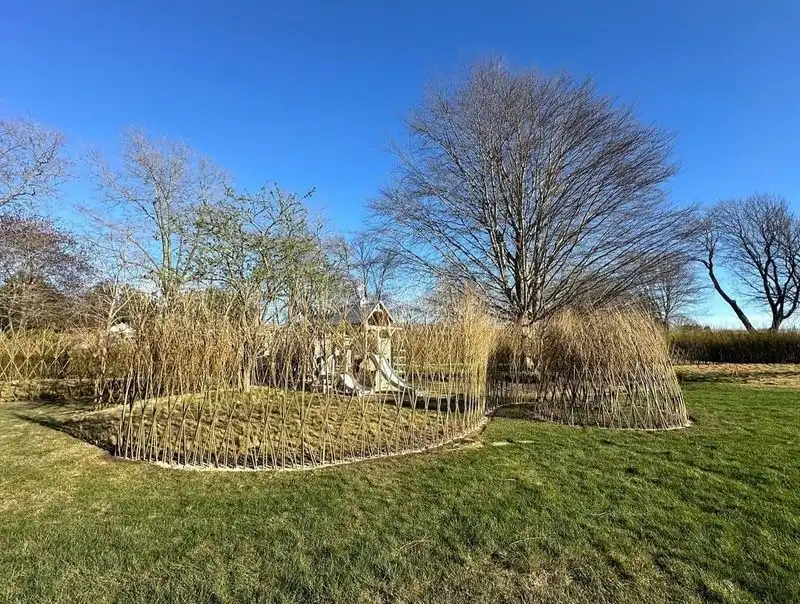
Willow’s pliability makes it perfect for creating living sculptures and fences. When woven, it forms intricate patterns that change with the seasons. Best suited for damp areas, willow thrives near water features. Regular weaving and trimming allow for creative designs, offering a dynamic aesthetic. As a living structure, it continues to grow, providing an ever-evolving boundary. These fences are not only functional but also a testament to natural art and craftsmanship, blending seamlessly with rural landscapes.
Boxwood Borders
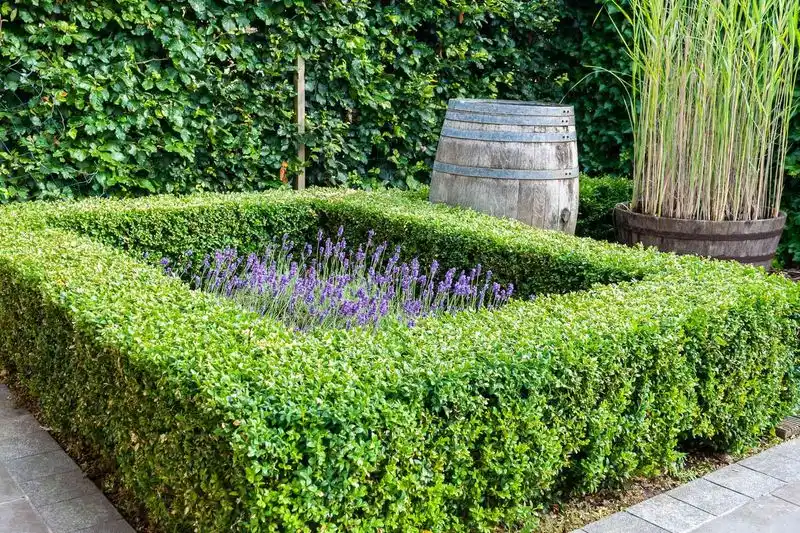
Boxwood hedges bring formality and structure to gardens. Known for their dense, evergreen foliage, they are excellent for creating classic borders. These shrubs can be shaped into various forms, from simple cubes to complex designs. Low maintenance and hardy, boxwoods thrive in diverse climates. Their versatility makes them suitable for both traditional and modern landscapes. Whether surrounding a flower bed or lining a pathway, boxwood borders provide a neat, polished look year-round, uniting function with timeless appeal.
Clematis Cascade
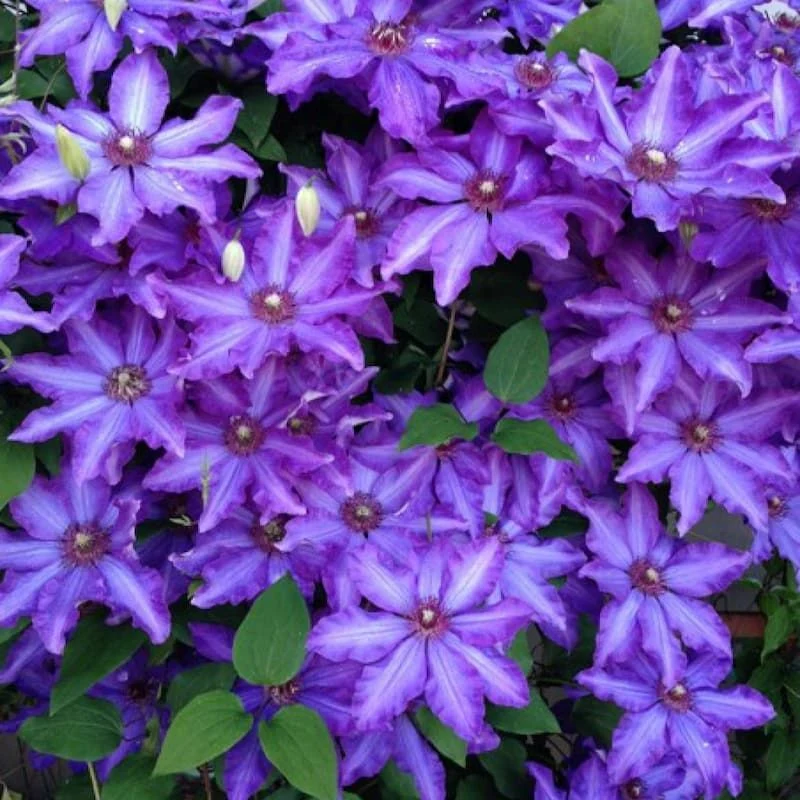
Clematis, with its abundant blooms and variety of colors, is a favorite for dressing up fences. Its vines are known for vigorously climbing and covering surfaces, turning mundane structures into vibrant tapestries. Preferring sunny spots with roots in the shade, clematis requires some care in planting. Regular pruning encourages more flowers and maintains shape. Available in various types, it can complement both contemporary and cottage gardens. As it fills with blossoms, clematis enhances any fence with its lively and inviting presence.
Privet Perfection
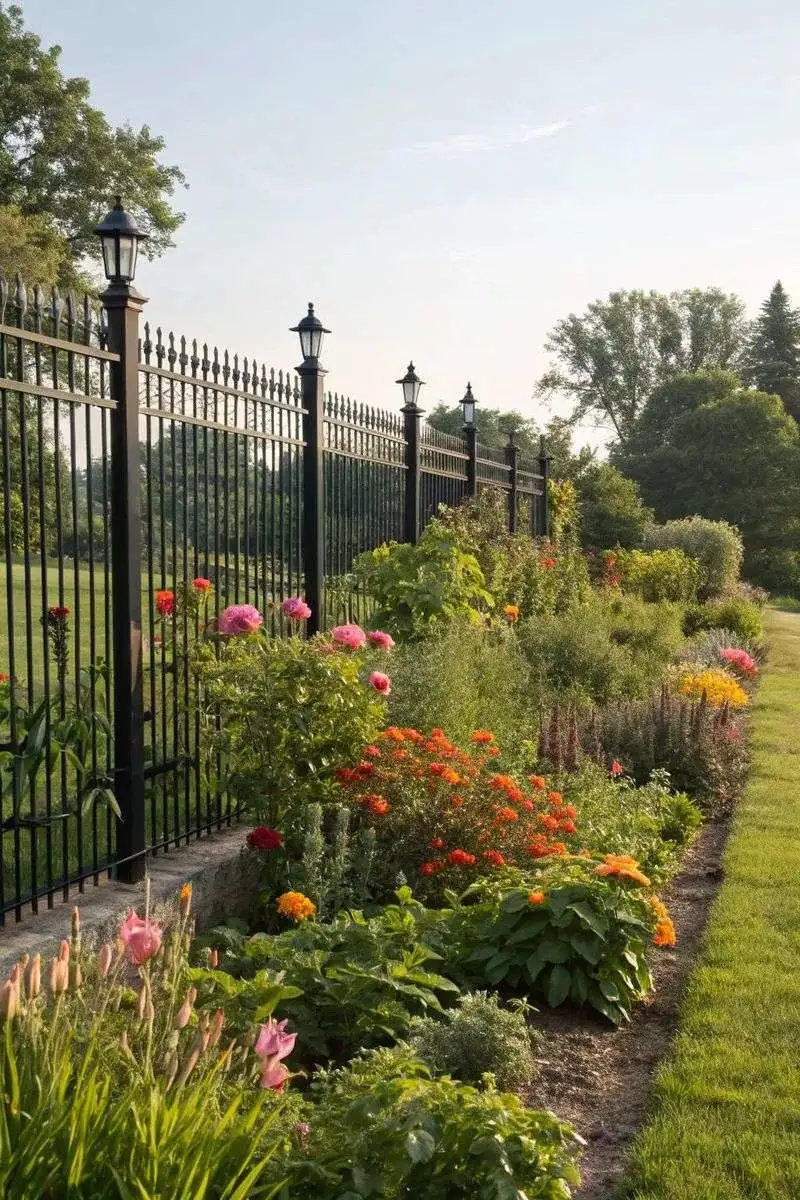
Privet hedges are popular for their dense foliage and rapid growth, making them excellent for privacy. They can be trimmed to any shape, fitting both formal and informal garden designs. Regular maintenance keeps them tidy and encourages growth. In addition to privacy, privet hedges offer habitat for birds and other wildlife. Their evergreen nature ensures year-round coverage, making them a practical choice. Whether as a backdrop for planting beds or a standalone boundary, privet offers versatility and reliability.
Grapevine Glory
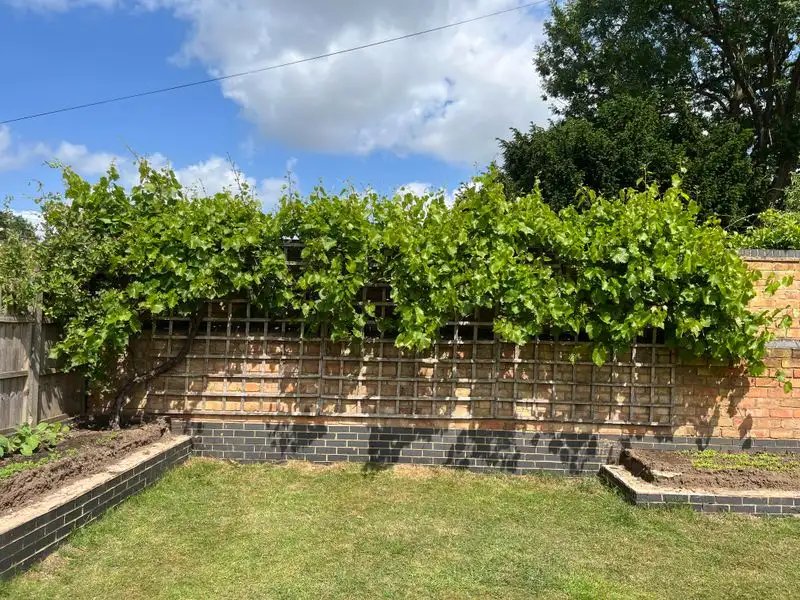
Grapevines bring a touch of Mediterranean charm to gardens. Perfect for fences or trellises, they offer shade and visual interest. Grown for both fruit and their aesthetic appeal, grapevines require sunny spots and well-drained soil. Pruning is crucial for fruit production and maintaining shape. The sight of grape clusters hanging from vines adds allure to any fence. Beyond their beauty, grapevines provide the added benefit of homegrown grapes, making them a rewarding addition to your garden.
Ivy Intrigue
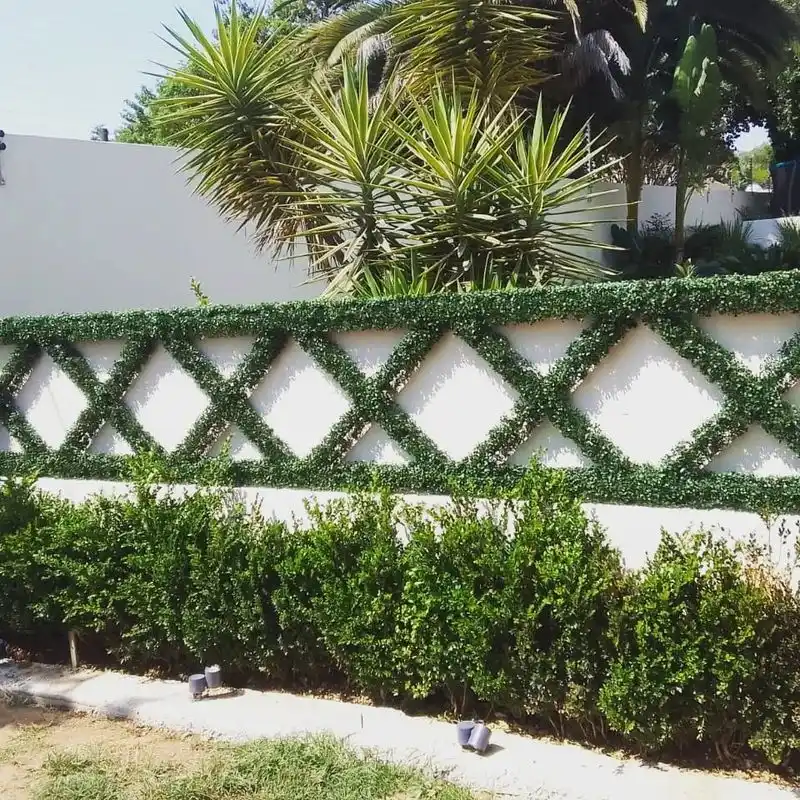
Ivy’s classic appeal lies in its ability to cloak surfaces with lush greenery. Known for its hardiness, it grows well against walls and fences, requiring minimal upkeep. Ivy can transform a plain structure into an elegant facade, offering timeless charm. Although it may need occasional trimming to prevent overgrowth, its dense coverage provides privacy and aesthetic value. Suitable for various climates, ivy remains evergreen, ensuring year-round beauty. Its adaptability makes it a versatile choice for gardeners seeking a low-maintenance option.
Jasmine Jewels
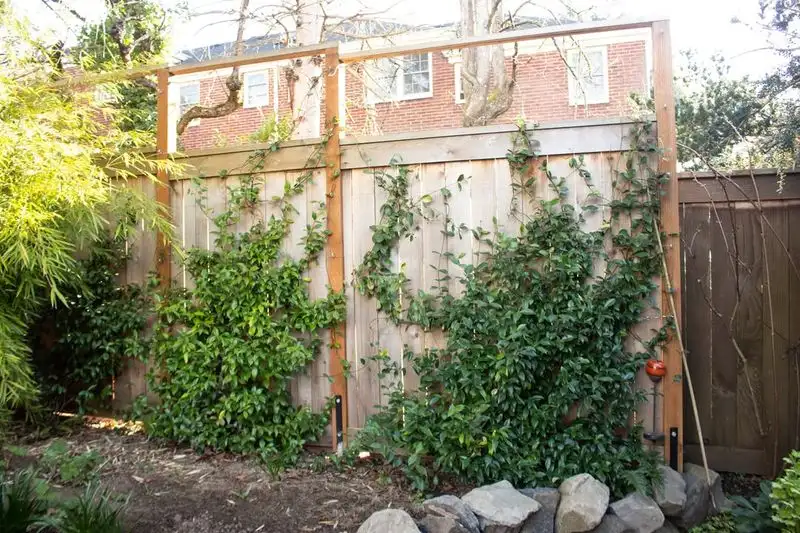
Jasmine, with its intoxicating fragrance and delicate flowers, makes for a delightful living fence. Known for its climbing ability, jasmine creates an aromatic barrier that appeals to the senses. Ideal for warm climates, it can be grown on trellises or fences, enhancing garden spaces with its beauty and scent. Regular pruning encourages robust flowering. The star-shaped blossoms attract pollinators, adding ecological value. As jasmine covers a fence, it offers not only privacy but a fragrant retreat, perfect for serene garden settings.
Lavender Lane
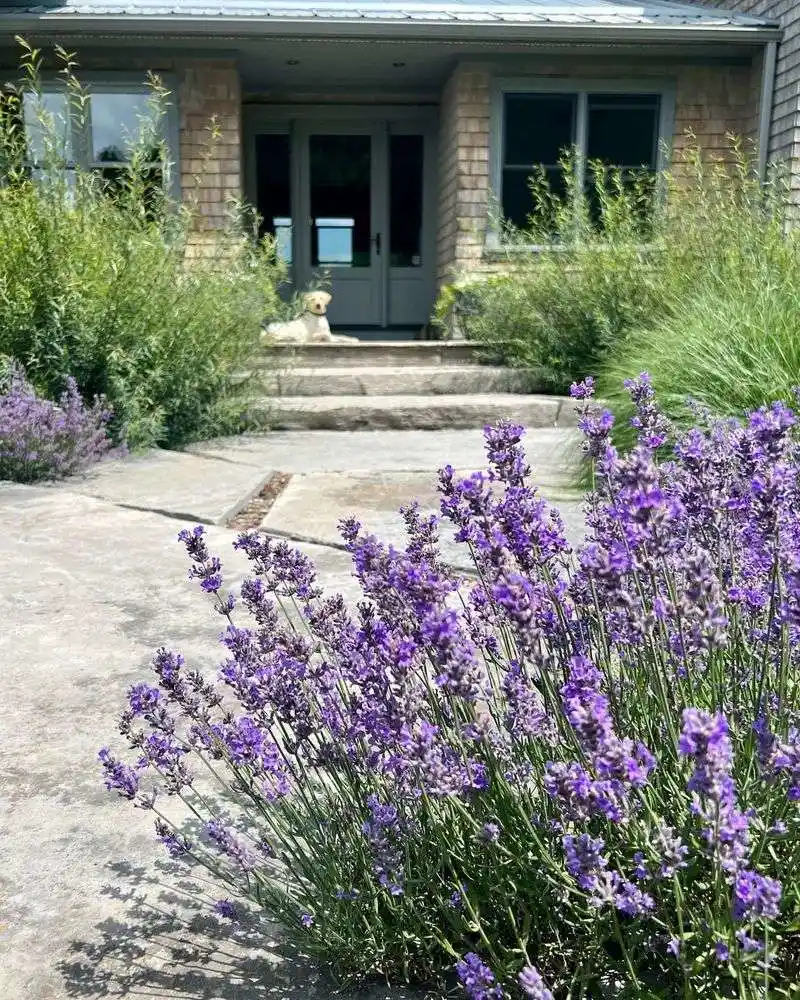
Lavender’s fragrant blooms and silvery foliage create a charming border for paths and garden edges. Thriving in sunny, well-drained spots, lavender is both beautiful and practical. Its scent repels pests, making it a natural choice for eco-friendly gardening. Low maintenance and drought-resistant, lavender suits various climates. Regular pruning encourages a bushy appearance and more blooms. Beyond its visual appeal, lavender’s fragrance and ability to attract pollinators make it a beneficial addition to any garden fence.
Reed Revamp
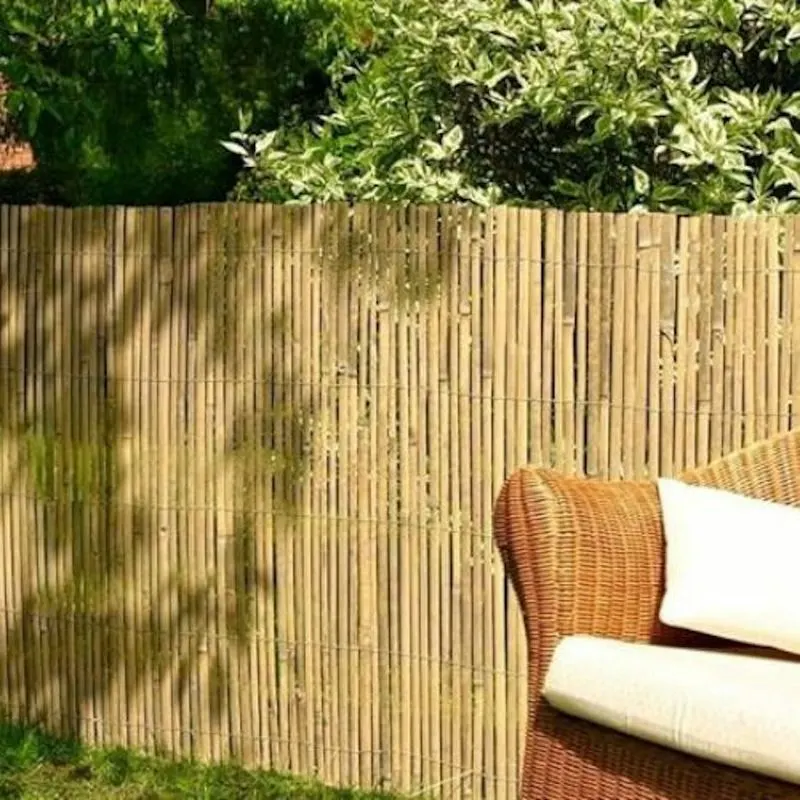
Reeds offer an eco-friendly fencing option, perfect for rustic and naturalistic garden settings. Their tall, slender stalks create privacy while swaying gracefully in the breeze. Easy to harvest and sustainable, reeds can be arranged in varying densities for different levels of opacity. They require little maintenance and blend seamlessly with natural landscapes. Used as standalone fences or in combination with other plants, reeds bring a touch of organic elegance. Their simplicity and effectiveness make them a unique choice for garden boundaries.
Sunflower Shields
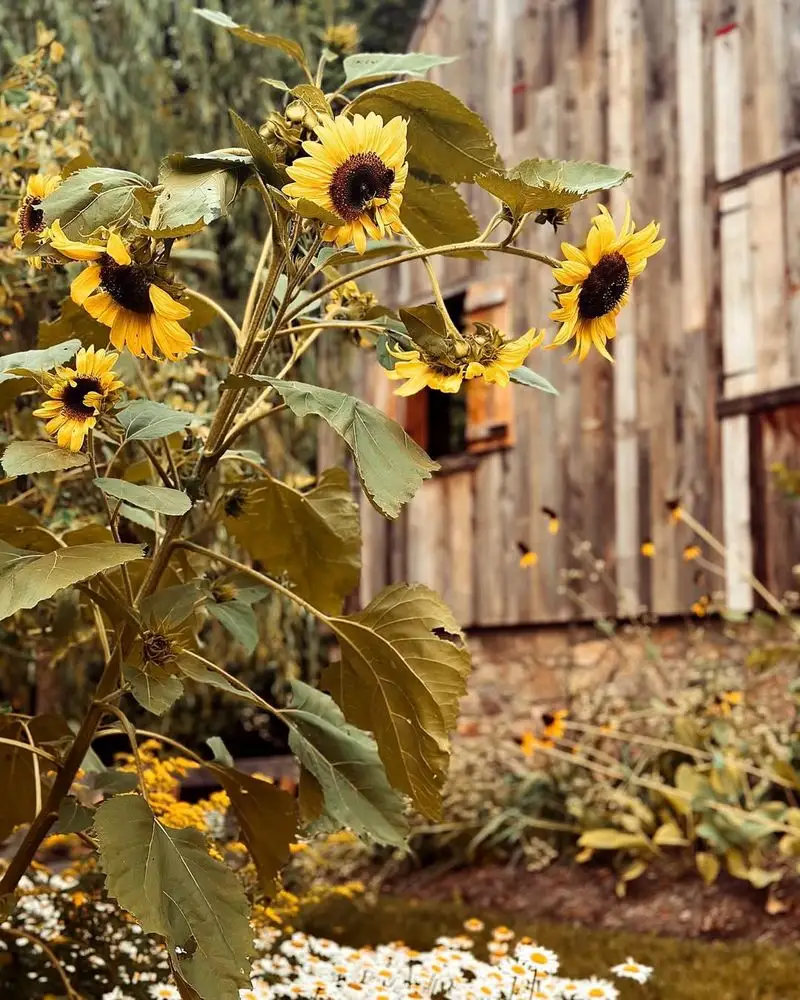
Sunflowers provide a vibrant and cheerful barrier in gardens. Known for their height and sunny blooms, they create an eye-catching display. Ideal for informal garden settings, sunflowers can be planted in rows to form a living fence. Requiring full sun and well-drained soil, they are easy to grow and maintain. As they tower over other plants, sunflowers offer a lively backdrop, attracting pollinators and birds. Beyond aesthetics, they also produce seeds, adding value to their beauty. Sunflowers make gardens feel welcoming and lively.
Cactus Corners
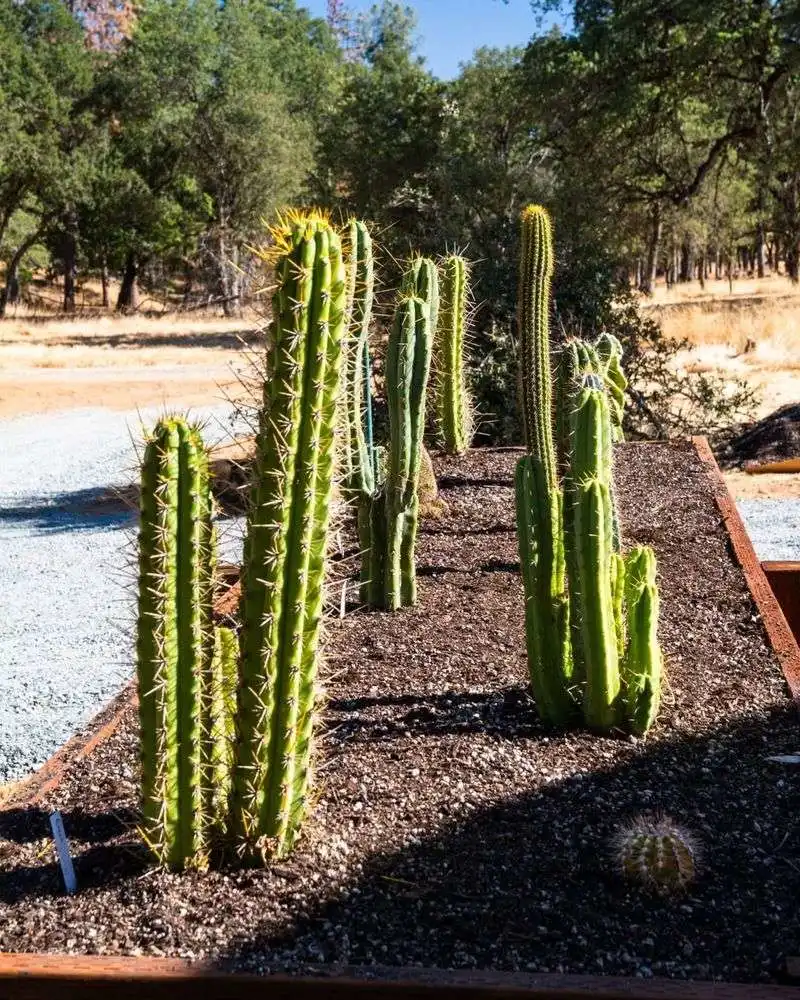
Cacti provide a striking and practical solution for fences in arid environments. Their varied shapes and sizes create interesting textures and visual interest. Ideal for xeriscaping, cacti require minimal water and thrive in sunny conditions. They act as natural deterrents due to their spines, offering security without blocking views. Arranged in groups, they can define garden areas effectively. Their blooms, when they appear, add unexpected color and charm. Cacti fences combine functionality with a unique aesthetic, perfect for desert gardens.
Hops Horizon
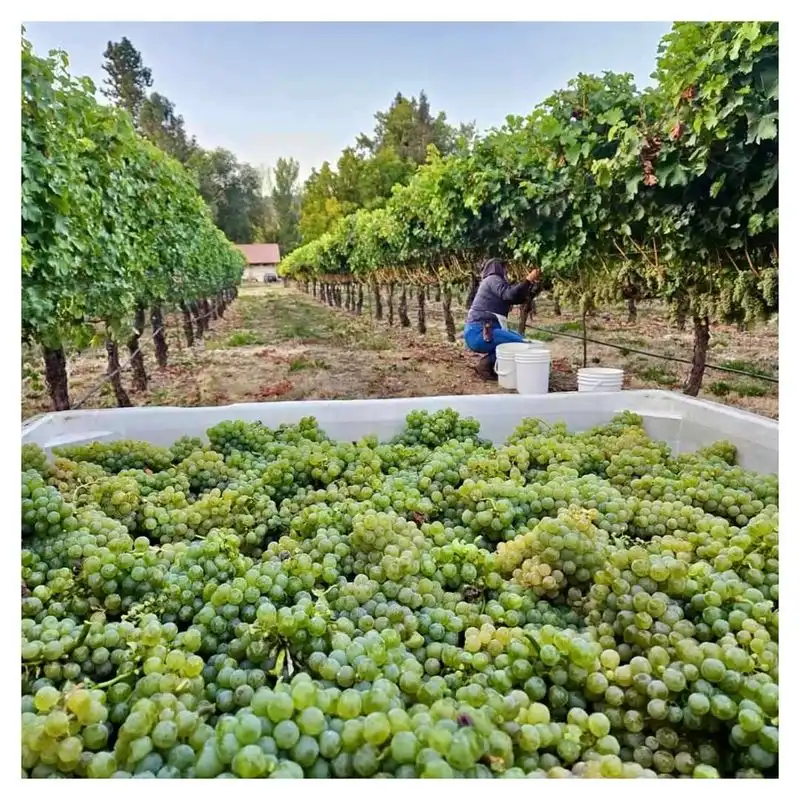
Hops, traditionally used in brewing, make for an unconventional yet effective living fence. Their vigorous growth and dense foliage provide excellent coverage. Climbing trellises or arbors, hops add vertical interest to gardens. Ideal for sunny locations with well-drained soil, they need regular pruning to manage growth. Beyond their visual appeal, hops can be harvested for home brewing, offering added utility. As they climb, hops create a green curtain that changes with the seasons, offering both beauty and practicality.
Thorny Brambles
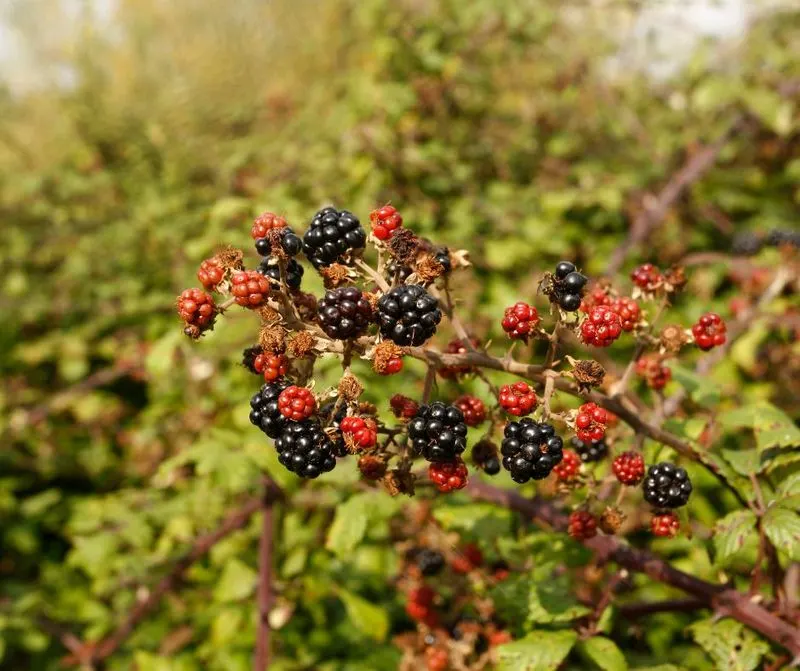
Brambles, such as blackberries, create formidable natural fences with their thorny vines. Perfect for rural areas, they offer privacy and security. Besides their defensive properties, brambles provide delicious fruit, making them both practical and tasty. They thrive in well-drained soil and sunny spots, requiring occasional pruning to maintain shape. As they grow, brambles form dense thickets that deter intruders. Their seasonal blossoms attract pollinators, enhancing biodiversity. Bramble fences combine the utility of a barrier with the benefit of a fruitful harvest.

